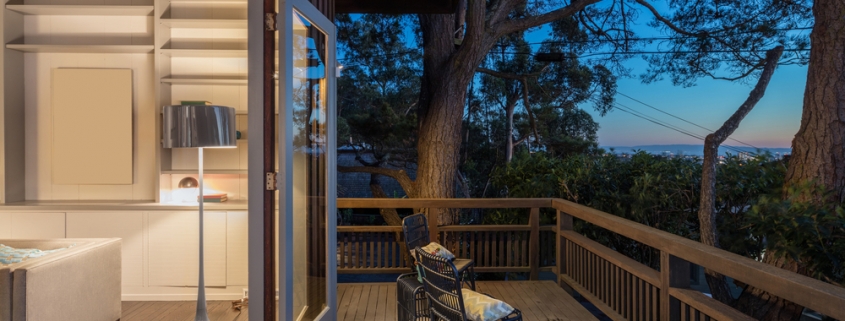Elevated Decks Should Be Designed With Safety as Priority
There are many factors that impact the design for elevated decks. Among these factors are engineering, slow work conditions, and safety issues, which add up to high bids.
Depending on the height involved in building elevated decks, it is critical to apply caution and planning to get the job done. Here are important considerations when it comes to the construction of elevated or high-level decks.
Designing For Height
- Bracing – Taller support posts on elevated decks will require bracing, aside from the need for lateral stability. Take note that such a design isn’t only a regular deck on stilts. This is the reason why special design considerations are needed when it involves a huge distance from the ground.
- Stairs – An elevated deck design includes stairs, which is an integral part that connects the lower and upper levels. To conserve floor space, it is often placed outside. The length of the stairs can also be minimized by landing it near the house.
- Railing – If your house has a high deck, the design of the railing is critical. Standard rail height for decks more than 12 feet should be around 42 inches.
- Grill – It is important to add reinforcement to the structure through the heavy grill. You can add double or triple joists where the grill is. A spa can be reinforced using added columns and beams that make a continuous load path down the footings. So you can also double the joists under the spas so that the span between beams can be shortened.
Take note that height is not all about reinforcement and safety though, so a higher elevation can suggest more design possibilities. For stacked decks, for instance, you can put a porch by the lower level through a watertight floor between decks. Additionally, you may consider framing and screening the walls.
Big Footings
Typical sized footings might not be enough for a single elevated deck. For one, these might not be enough to support stacked decks. Thus, it is important to consider footings that are wider and deeper than usual to handle the increase in loads.
Scaffolding
Always remember that when elevation increases, the overall level of difficulty in building decks also increases. This is because the scaffolding can get more extensive. So the higher the work zone is, the more time-consuming it will be for moving materials, people, and tools.
Safety Issues
There are many more factors that builders need to focus, which include stacking decks over wood columns. However, it is always a top concern for builders to consider safety.
Designing elevated decks can be a concern for the crew and the contractor. In fact, even safety harnesses and scaffolding are not enough to eliminate the possibility of getting injured.
Therefore, management must focus on safety and make sure everybody involved should participate. So it is the responsibility of everyone to understand the risks and difficulties in working with height. At the same time, they should have a working knowledge of scaffolding safety as well as the proper usage of safety harnesses.
Deck Inspectors for Southern California is happy to offer our services in Los Angeles, Orange County as well as San Diego and all Southern California surrounding areas like: Glendale, Pasadena, Burbank, Santa Monica, Anaheim, Temecula, Vista, Escondido, Carlsbad, and El Cajon



